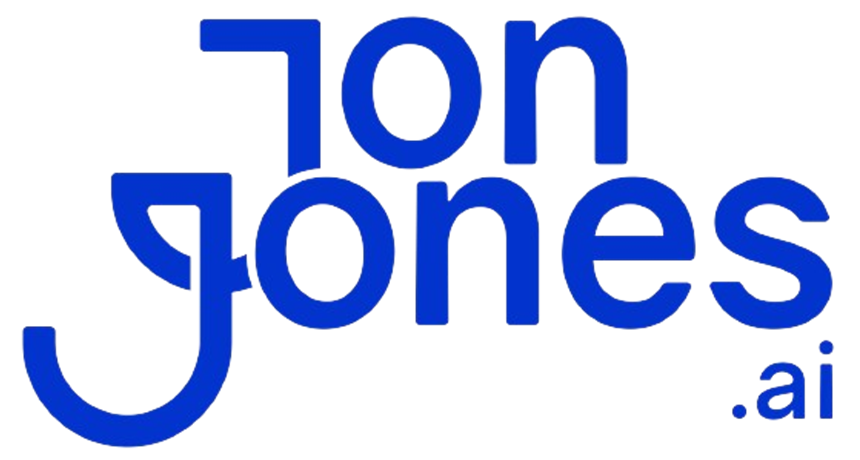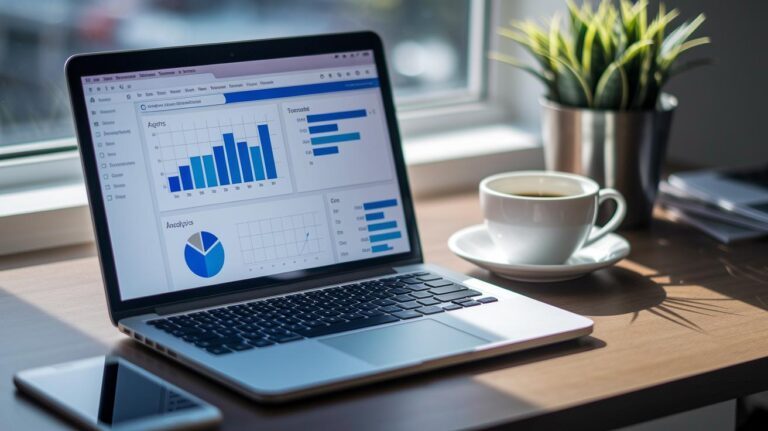Ever had a promising lead vanish before you even pick up the phone?
We juggled spreadsheets, gut calls, and massive email lists, only to watch prospects slip through the cracks. Frustrating, you know?
Then we flipped the script with predictive lead scoring (an AI model that ranks prospects by how likely they are to buy). It pulls data from clicks, email opens, and CRM notes (customer relationship management software that logs every touchpoint), and hands each lead a score between zero and a hundred.
Scores above eighty? That’s your “ready to buy” signal. Nice. Now you zero in on hot prospects and skip the guesswork.
Next, we’ll walk you through how AI lead scoring helps you boost revenue, cut manual grunt work, and sharpen your sales focus. Let’s dive in.
AI-Driven Predictive Lead Scoring: Features, Benefits, and ROI

Ever feel swamped by low-quality leads? We did, too. Predictive lead scoring uses AI (artificial intelligence) and machine learning (algorithms that learn from data) to analyze both past records and real-time signals, like website clicks, email opens, and CRM (customer relationship management) notes.
This lets you spot buying patterns that old-school point systems miss. Scores run from 0 to 100, where above 80 means strong intent, 50 to 79 hints at moderate interest, and below 50 shows low likelihood. When we feed our models with predictive analytics in marketing, we pinpoint the touchpoints that really move the needle.
Here are five ways AI lead scoring pays off for you:
- You’ll boost close rates by zeroing in on your hottest leads.
- Your sales team saves hours, no more manual lead sorting.
- The model gets smarter with each new data point.
- Marketing and sales finally agree on which leads matter.
- You’ll build smarter lead-gen plans with dynamic score updates.
To see your ROI, track a few key metrics: conversion uplift on high-scored leads, shorter sales cycles, and revenue bumps from AI-prioritized deals. Many teams build a live view with predictive analytics dashboard examples to keep stakeholders in sync.
Forecasts show the fintech predictive lead scoring market hitting $49.43 billion by 2028, and 62% of marketers now lean on AI to predict buyer behavior. As more small and mid-sized businesses jump in, you’ll see faster deals, smarter lead prioritization, and smoother collaboration between marketing and sales.
Data Inputs and Machine Learning Methods for Predictive Lead Scoring with AI

Predictive lead scoring pulls together what people do on your site, how they interact with your emails, notes in your CRM (customer relationship management record), and intent signals, all wrapped up in score bands like 0–49, 50–79, and 80–100. Think of it as our way to spot hot prospects before they even reach out.
Machine Learning Methods
- Logistic regression (an algorithm that predicts yes-or-no outcomes).
We start simple. It might give a demo request a weight of 0.7 and a page view 0.3, tipping the scale toward anyone showing strong interest. - Decision trees (a model that asks a series of yes/no questions).
Picture a flowchart: “Did they download our guide?” Yes → +20 points. No → +5 points. Easy to follow. - Ensemble models like random forest and gradient boosting (multiple models working together for better accuracy).
Imagine dozens of mini decision trees each casting a vote on whether a lead’s ready, like polling your sales team before making a call.
Continuous Retraining
We set up nightly retrains so our model learns from yesterday’s new sign-ups and closed deals. Then we run A/B tests on each update to see which version lifts conversions more. We keep an eye on AUC (area under the curve, a measure of how well we separate good leads from bad) and precision (how often high-scoring leads become customers) to catch any drift early.
Automating Outreach Based on Dynamic Scoring
- Low-score drip. You’ll send weekly tips and easy how-tos.
Example: “Missed us? Here’s how our tool cuts your email time in half.” - Mid-score nudge. You trigger a demo invite when someone digs deeper.
Example: “Hey [Name], I saw you checked pricing twice, want a quick tour?” - High-score alert. Sales gets a Slack ping the moment a lead books a call.
Example: “Hot lead: [Name] just scheduled a demo. Jump in!”
Integrating Predictive Lead Scoring with AI into CRM and Marketing Automation

Ever felt swamped by messy lead data? Messy records and stale contacts can throw off your predictive lead scoring (an algorithm that forecasts which leads will convert). So before you connect anything, audit your CRM, remove duplicates, and freshen up old data.
This clean-up keeps your scores honest. Next, we’ll weave those AI-powered lead scores into your daily workflows. Follow these steps to make it happen:
- Link your CRM and marketing tools so they share site visits, email stats, and lead scores automatically.
- Set rules to send top-scoring leads straight to your sales team, move mid-level leads into nurture campaigns, and tag low-interest leads for awareness emails.
- Create email triggers and CRM alerts that fire when scores hit certain thresholds, you might kick off a drip at 50 points or ping sales at 80.
- Schedule quick data checks to catch missing fields or odd tags before they slow you down.
Got it.
| Integration Scenario | Key Benefit |
|---|---|
| CRM sync | Real-time scores |
| Email trigger | Timely outreach |
| Dashboard embed | Performance visibility |
Comparing Predictive Lead Scoring Software and AI Solutions

When you compare predictive lead scoring (a system that ranks leads by how likely they are to buy), keep these criteria in mind:
- Integration ease: connects quickly with your CRM (customer relationship management system) and marketing apps.
- Refresh rate: how often your lead scores update.
- Signal scope: tracks email, website behavior, and CRM records.
- Custom model support: lets you fine-tune scoring weights.
- Pricing & support: outlines service tiers and help options.
Salesforce Einstein Predictive Scoring
Sales Cloud and Account Engagement run on Einstein’s AI, updating lead scores every ten days. Next Best Action suggests follow-up steps based on real customer behavior. Automatic activity capture logs emails and calendar events so you skip manual data entry.
Opportunity Insights flags deal risks or engagement spikes in real time. You’ll know exactly when to reach out. This setup works best if Salesforce is your sales hub.
HubSpot Predictive Lead Scoring
HubSpot gives you custom scoring models alongside built-in AI tools. You set points for actions like form fills or content downloads, and the system adjusts weights as it learns. It tracks signals across email, social, and web visits.
Scores update in real time and push top leads into automated workflows. It’s perfect for small to mid-sized teams looking for one all-in-one AI-powered CRM.
ActiveCampaign and Demandbase
ActiveCampaign shines with real-time score updates and win-probability predictions in your nurture sequences. It sends hot leads straight to reps and keeps other prospects in targeted email tracks. Demandbase ABX focuses on account-level MQAs (Marketing Qualified Accounts), watching multiple decision-makers at each company.
Between the two, you get contact-centric outreach with ActiveCampaign or account-centric personalization with Demandbase. Both help you scale your lead generation.
Specialized AI Solutions (Infer, 6sense)
Infer and 6sense pull in external data, like firmographics (company info), technographics (tech stack details), and intent feeds (signals of buyer interest), to keep their models learning. Their feature-importance analysis shows which signals drive conversions. Integration is via bidirectional APIs for smooth data flow, and models refresh automatically as new patterns emerge.
This deep-data approach blends your CRM’s history with third-party insights, tackling complex AI challenges head-on.
Optimizing and Measuring Predictive Lead Scoring Performance with AI

With predictive lead scoring (a system that ranks leads by how likely they are to buy), we first set initial thresholds using your past conversion data. We map old wins to score ranges, then tweak variables so demo requests carry more weight than page views.
Next, we:
- Compare converted leads (those who bought) vs. non-converted ones to pick a score cutoff.
- Rank each signal by how well it predicts purchases and assign weights.
- Run a pilot on a small lead batch, then adjust until accuracy peaks.
Once that’s live, we’ll watch key numbers: the conversion rate of high-score leads, your average sales cycle, and the lead-to-customer ratio. We drop these on an analytics dashboard so your team can spot trends fast and sharpen your lead generation tactics.
Then, we schedule model retraining (refreshing the AI) every 3–6 months, or sooner if your market moves fast. Regular tune-ups keep scores from drifting and lock in fresh behavior patterns.
Keep an eye out for stale or duplicate contacts, rigid rules that never budge, and missing feedback from your sales reps. Overfitting to old trends or ignoring rep insights are classic traps.
To stay on track, we run quarterly data audits, A/B test threshold tweaks, and loop in sales feedback each month. That way, you’ve got a clear roadmap for boosting model accuracy.
Finally, set targets for each KPI, say a 20% lift in high-score conversions, and revisit them yearly as benchmarks shift. That’s your playbook for measuring ROI and proving ongoing AI value.
Best Practices for Lead Prioritization in Predictive Lead Scoring with AI

When we pick which leads to chase, we want to zero in on the best ones. Predictive lead scoring (an algorithm that ranks potential customers by their chance to buy) gives you a head start. But we can push it even further. Got it.
- Hybrid scoring. We mix what the AI suggests with your team’s real-world insights. Picture this: the model gives a lead a 68 score, but your rep notices they’ve joined three webinars. You bump them to “hot,” and over time the AI learns to do that on its own.
- Cross-sell/up-sell signal modeling. We track usage and renewal intent. If a customer logs in 10 times a week and has a renewal in 30 days, you send a custom upsell email. Simple, right?
- Multi-dimensional metrics for account growth. Combine feature use with support tickets. If someone dives into Feature A but never touches Feature B, you trigger a cross-sell play.
These tweaks dive deeper than simple cutoffs. You’ll catch more high-value moments and boost your win rate.
2 Predictive Lead Scoring with AI Boosts Revenue

Predictive lead scoring (an AI model that predicts which prospects will convert) can give your revenue a real jump.
- One fintech firm saw a 25% boost in conversion on leads scoring above 80. They tapped into a market set to hit $49.43 billion by 2028.
- In a survey, 98% of sales reps using AI say they prioritize leads better than with manual scoring.
- An e-commerce brand slashed lead response time by 40% with real-time score updates, and timely outreach lifted their average order value.
- A B2B tech company mixed predictive and point-based scoring to raise SQL-to-opportunity conversions by 18%.
These wins don’t stop at conversions. By mapping leads to deals more accurately, you can cut forecast errors by around 20%. And when you zero in on high-scoring prospects, you boost lifetime value predictions by about 15%, your reps spend time on the biggest opportunities.
Results matter.
Smarter conversions.
Tighter pipeline forecasts.
Stronger customer lifetime value.
Final Words
Jumping right in, we showed how AI and historical data can give leads a 0–100 score. Then we walked you through setting up those scores in your CRM, compared top platforms, and shared tips to fine-tune performance.
We also outlined ways to keep sales and marketing aligned and highlighted case studies that prove real ROI gains. Now, you’re ready to boost conversions and save time.
Embrace predictive lead scoring with AI and get set for faster growth and smarter sales every day.
FAQ
Predictive lead scoring with AI example
The predictive lead scoring with AI example uses machine learning to weigh web visits, email clicks, and CRM history into a 0–100 score, so your sales team spots top prospects instantly.
What is AI lead scoring and predictive lead scoring in HubSpot?
The AI lead scoring and predictive lead scoring in HubSpot applies a custom model to track behaviors across forms, emails, and site activity, updating lead scores dynamically so you focus on buyers showing real interest.
How does predictive lead scoring integrate with Dynamics 365?
The predictive lead scoring in Dynamics 365 uses built-in AI to evaluate CRM data, auto-assigning lead scores and syncing results so your sales dashboards reflect up-to-date buying signals in real time.
What is Einstein Lead Scoring?
The Einstein Lead Scoring feature in Salesforce uses AI to analyze activity and historical deals, then assigns lead scores every 10 days so you know which leads need priority outreach without manual setup.
What is Data Cloud lead scoring?
The Data Cloud lead scoring uses a unified data platform to pull customer signals from all channels, apply AI-driven algorithms, and generate actionable lead scores that feed into any connected CRM or marketing tool.
What is lead scoring software?
Lead scoring software is a tool that quantifies prospect fit by assigning numeric values to behaviors and firmographics, helping sales and marketing teams prioritize leads and streamline outreach workflows automatically.
How do I learn Einstein Lead Scoring on Trailhead?
The Einstein Lead Scoring Trailhead module walks you through setup, data prep, and score interpretation using hands-on exercises, so you build and deploy a predictive scoring model step by step.






